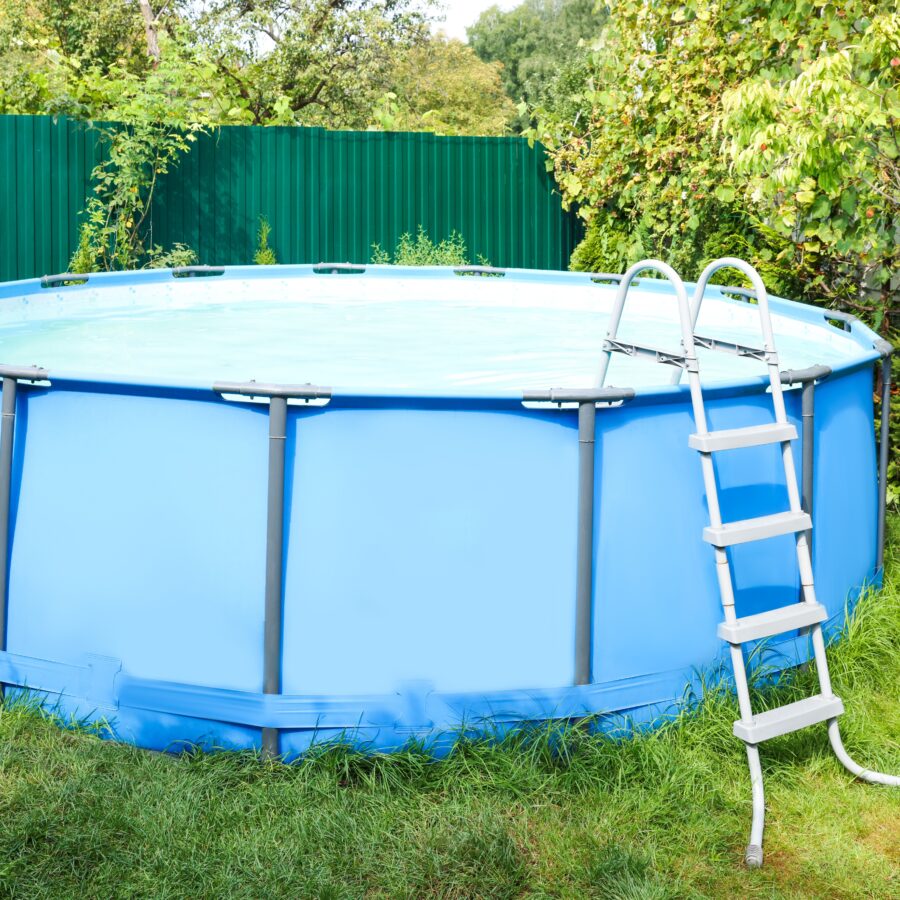Tragically, with summer in full swing, it’s that time of the year again: across the country, hundreds of children under the ages of 5 will drown or nearly drown in aboveground pools.
Earlier this week a Mom in Texas posted a video that went viral showing her 2-year-old climbing a pool ladder all by himself, trying get into the family’s aboveground pool. Although the Mom who took the video was on top of the situation and snatched the child off the top of the ladder before he could jump in the pool, in the real world, this usually doesn’t happen. Children who typically climb into an aboveground pool aren’t found by their parents until several minutes go by, by which time they are either dead or seriously brain injured.
The danger of aboveground pools and the hazard of poorly designed ladders is a “dirty secret” that is well known to the pool industry but virtually unknown by the public. The pool industry has known for years that approximately 70 children die every year in aboveground pools because of the lack of adequate safety precautions and poorly designed ladders. The industry also knows that there are a host a very simple solutions that could eliminate this problem, most particularly, a ladder designed to prevent a child from entering the pool.
A few years ago our law firm was contacted by family in Fort Myers Florida whose 2-year-old son was critically brain injured following a pool submersion incident. The family had purchased an aboveground pool from a local big box store, which came with a cheap A-frame ladder. Despite being wonderful parents, the Mom turned her back on her child for less than 5 minutes while she went inside to get the child a sandwich. Upon her return, she found the child’s diaper next to the pool, and to her horror, found her child lying face down in the pool itself.
She immediately called 911, and fortunately, the child was administered CPR and was brought back to life. Sadly, because of the amount of time to his brain had gone without oxygen while submerged in the pool, he was catastrophically brain injured and today still has serious development and neurologic disabilities.
This scenario plays itself out time and time again every summer. In addition to the approximate 70 child deaths every year, there are approximately 1,000 additional children under the age of 5 who are taken to the emergency room for nonfatal injuries caused by being submerged in an aboveground pool.
Despite efforts by some consumer advocates to push for adoption of strict safety standards (such as the standards put in place by most state and local governments for inground pools), there are no mandatory safety regulations for the aboveground pool industry. The industry is dominated by 2 or 3 major players who have representatives that sit on the ASTM Committee responsible for enacting such standards. As a result? Proposals have been killed, and the industry enjoys a status quo which allows them to sell aboveground pools with cheap and incredibly dangerous A-frame ladders.
Our law firm recently commissioned a study where we had some experts set up an aboveground pool. The experts then had a group of 2 and 3 year-olds try to enter the pool using various types of ladders – some good and some bad. It came as no surprise that the children were all able to easily enter the pool using the basic A-frame ladder that came with the pool. However, there were several alternative designs – one of which provided for the steps of the ladder to swing up when not in use by an adult – – which completely thwarted any attempts by the toddlers to climb into the pool.
Until the industry decides to adopt voluntary standards, or until the Consumer Product Safety Commission weighs in to address this issue, the epidemic of child drowning and near drowning events in aboveground pools will continue. Which is tragic because we know, with certainty, 2 things: first, as families across Florida and the country buy aboveground pools with cheap A-frame ladders, children will continue to be killed and catastrophically injured by the hundreds. Second, for only a few dollars more per pool, all of these needless deaths and injuries can be avoided.
Because of the Government’s unwillingness to force the aboveground pool industry to address a known child safety hazard, civil litigation remains the only meaningful path to effect change. Hopefully, perhaps years from now, after the multinational corporations who make these terrible products are hit with a sufficient number of large jury verdicts, they might eventually decide it’s economically in their best interests to fix the problem. Which they could absolutely do today.
Until then, every summer, hundreds of children will be seriously injured and killed.


